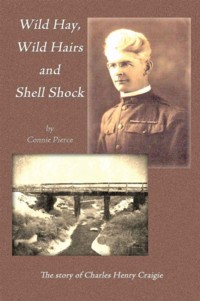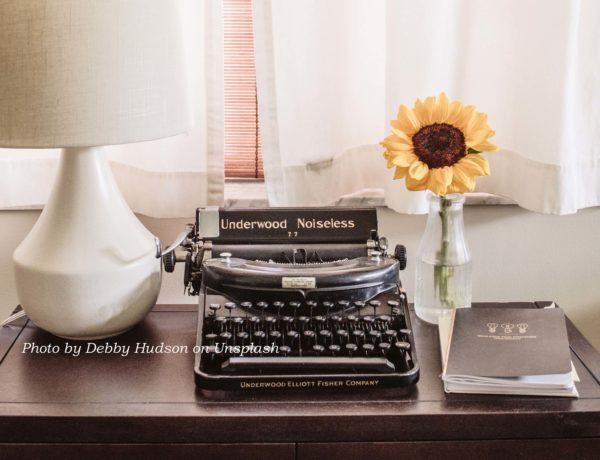Originally published March 16, 2013
Even when you love history, the task of picking some subject small enough to fit in a book but large enough to engage a reader can sometimes be quite a task. The shear volume of information that we have about the past can be overwhelming, and yet there is more to learn, more to capture, more to place in a setting that helps us understand more of where we come from and where we are going to. One of my very best friends ever has taken this task to heart. Drawn by her love of the book she has written a couple of small books about her experience as a wife coping with Alzheimer’s and her experience as a book seller. Now she brings us a taste of what it was like to live at the turn of the last century. What it meant to fight in the Spanish-American War and World War I. What it meant to live in an America still finding its way in the world. The product of that journey is Wild Hay, Wild Hairs and Shell Shock. I asked her to tell me something of her journey to her great-grandfather’s life and times.
I don’t look at myself as the author of Wild Hay, Wild Hairs and Shell Shock; rather something of an interpreter and translator, as well as an editor. To me, Charles Henry Craigie is the true author. He was my great-grandfather by marriage and he left his family with the treasure of his thoughts.
Craigie’s notes were left in the form of a draft manuscript without punctuation or paragraphing. As I typed the work before me, there were times when the whole meaning would be confusing. Suddenly a light would dawn as soon as I switched punctuation and words would fall into order in different sentences or phrases.
Included in the punctuation puzzlements were quotations (without quote marks), many of which involved dialogue. Thus, separating his own writing from his remembered conversations became another challenge.
One curiosity with this manuscript is that Craigie grew up in an era of alphabet sounds (not yet referred to as phonics); his spelling wasn’t of overall importance to him. He simply spelled things the way he heard them. Couple that with penciled, difficult-to-read handwriting on browning, brittle paper, and there you have a picture.
My mother, Sharon Smither-McFarland, had typed up the manuscript in 1999. Having her comb-bound copy in hand, I would go back and forth between Craigie’s original and Mom’s manuscript. Many times, a combination of the two or three (counting my own) ways of looking at his words would spark something of an “Oh” moment. Then I’d be on to changing punctuation (or paragraphing) around again. Without Mom’s initial efforts, I would still be working on this project.
I did succeed in keeping the majority of Craigie’s sentences in the word order he had written them with few exceptions. A lot of his philosophical paragraphs and thoughts ended up at the end as Chapter 11. Some just did not fit in with his narrative. In this way, Chapter 11 became my concoction of Craigie’s thoughts.
Because this story isn’t “mine,” I didn’t change anything in his intended narrative. It wasn’t mine to rewrite in that sense. It was only mine to translate for the reader.
Since a lot of his story concerned places-in-time, I wanted accuracy. In order to make sure I reported his story accurately I researched things as detailed as street names in Minneapolis. He grew up and worked in the farm country of Minnesota and the Dakotas and again, it took research to follow his narrative. I also researched the places that seemed pivotal to his narrative as a verification of history.
Verifying places in a historical context had me looking up modern and older maps in order to take his words and translate them to places he had been in America and abroad. When it came to his involvement in the Spanish-American War, I spent some time learning about the Philippines. I also researched places of importance in the British Isles and France during the time of World War I.
Craigie’s spelling became especially difficult to interpret as he entered his World War I chapter. He seemed to enjoy throwing in some French words here and there, as well as referring to French places. I was getting lost with that research and enlisted the help of my sister, Kelly McFarland-Sellers. Her background in French helped me resolve what he was trying to say.
What I left out of my manuscript were his repetitions. Keeping in mind, this had never before gotten beyond draft form; Craigie was very good at repeating himself. Not wanting to bore the readers, I started to chop a lot of the repeats; especially the clichés, although I didn’t feel it was my right to drop the cliché entirely from his book. It was part of his style and a more acceptable part of his era than ours.
As far as photographs go, I ended up choosing only one, and that is the one of Craigie which was used on the cover of the book, in uniform, with his abundant, white, shell-shock hair. For some reason, the family pictures of Charles with my great-grandmother Lula Belle, in the end, didn’t seem appropriate for the public book.
As you can see, sometimes something as simple as finding your own story can help others see a piece of history they would not have known. As it happens, Connie’s little book has made it into the top 20 of Amazon’s Hot new Releases in Military/Veterans! Touch the past, and find the future.




No Comments